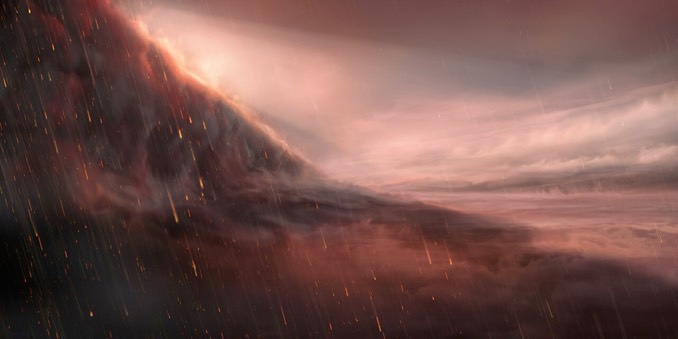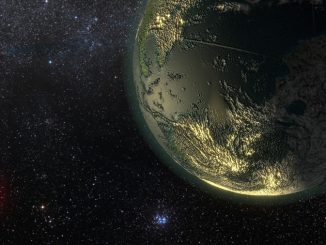
A tidally locked exoplanet 640 lightyears from Earth – WASP-76b – features day side temperatures that reach 2,400 degrees Celsius (4,352 F), hot enough to vaporise metals like iron. On the night side, which never faces the sun, it’s about 900 C cooler. That extreme temperature range generate ferocious winds that carry vapours across the terminator where they cool and condense, likely resulting in a rain of molten iron droplets.
“One could say that this planet gets rainy in the evening, except it rains iron,” said David Ehrenreich, a professor at the University of Geneva in Switzerland, leader of a study published in the journal Nature.
Using the European Southern Observatory’s Very Large Telescope and the ESPRESSO instrument, Ehrenreich and his colleagues were able to detect a strong signature of iron vapour at the evening terminator where the planet transitions from day side to night side.
“The observations show that iron vapour is abundant in the atmosphere of the hot day side of WASP-76b,” said María Rosa Zapatero Osorio, an astrophysicist at the Centre for Astrobiology in Madrid, Spain, and leader of the ESPRESSO science team. “A fraction of this iron is injected into the night side owing to the planet’s rotation and atmospheric winds. There, the iron encounters much cooler environments, condenses and rains down.”
ESPRESSO, an acronym for Echelle SPectrograph for Rocky Exoplanets and Stable Spectroscopic Observations, was designed to search for Earth-like planets in orbit around Sun-like stars. But working with the light-gathering power of the VLT, ESPRESSO turns out to be well suited for studying exoplanet atmospheres.
“What we have now is a whole new way to trace the climate of the most extreme exoplanets,” says Ehrenreich.



